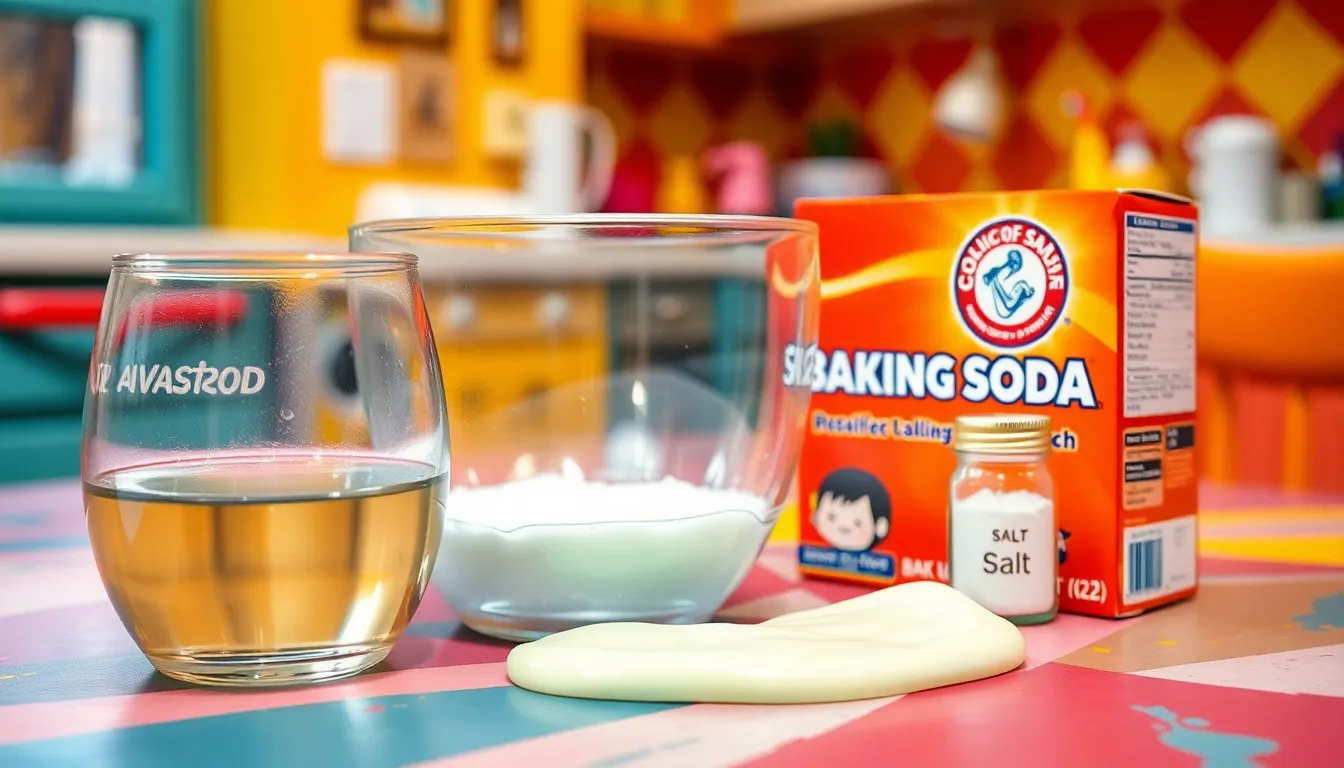Slime lovers, rejoice! If you’ve ever found yourself in a sticky situation without activator, fear not. Activating slime without the traditional stuff is not only possible but also a fun challenge that’ll unleash your inner mad scientist. Who knew that crafting gooey goodness could be so adventurous?
Understanding Slime Activation
Understanding slime activation involves recognizing the processes that transform glue into a gooey, playful substance. It emphasizes creativity and can be done using various household items.
What Is Slime Activation?
Slime activation refers to the chemical reaction that occurs when a binding agent, like glue, combines with an activator. Water, cornstarch, or baking soda can serve as alternatives to traditional activators. Each alternative triggers the cross-linking of polymer chains in glue, resulting in a stretchy and fun slime texture. Choosing different activation methods allows for variations in slime consistency and elasticity, offering unique experiences for enthusiasts.
Importance of Proper Activation
Proper activation impacts the final texture and playability of slime. Without adequate activation, slime may remain sticky or too runny, limiting enjoyment. A well-activated mixture ensures the right balance of liquidity and stretchiness, enhancing the tactile experience. Using suitable proportions of alternatives can lead to improved durability and longevity of the slime. Engaging with the activation process fosters a better understanding of basic chemistry concepts, making it an educational adventure.
Alternative Ingredients for Activation

Activating slime without traditional activators opens up a world of creative possibilities. Various household items can serve as effective alternatives.
Common Household Items
Water serves as a primary ingredient, often helping thin the slime to the desired consistency. Cornstarch creates a thicker texture, achieving a doughy substance that’s fun to play with. Baking soda, when combined with vinegar, produces an interesting reaction that enhances elasticity. Salt can also improve the slime’s texture by increasing its stretchiness. Caution is essential; each ingredient impacts the slime’s properties differently, which leads to varied sensory experiences.
Creative Solutions
DIY enthusiasts might consider alternatives like laundry detergent or contact lens solution. Both options can create a stretchy slime when mixed with glue. Adding baby oil offers a unique texture, giving a glossy finish. Dish soap allows for an interesting combination of texture and scent. Each solution encourages experimentation, promoting fun and learning. Testing different ratios leads to personalized results, enhancing the slime-making adventure.
Step-by-Step Guide to Activate Slime
Activating slime without traditional activators can be done effectively using common household items. Below are methods using dish soap and shaving cream.
Method Using Dish Soap
Dish soap provides an easy way to achieve slime activation. Begin by mixing equal parts of glue and dish soap in a bowl. Combine thoroughly for a uniform blend. Next, add in a small amount of water to adjust the consistency as needed. If the mixture appears too sticky, increase the soap slightly. Kneading the slime by hand helps enhance elasticity. This process promotes flexibility while allowing for creative play. After activation, the slime should exhibit a smooth texture that’s enjoyable to stretch and mold.
Method Using Shaving Cream
Shaving cream serves as another alternative for slime activation. Start by combining one cup of glue with two cups of shaving cream in a large mixing bowl. Stir until the mixture becomes fluffy and well incorporated. Adjust the cream quantity to reach the desired thickness. Adding a teaspoon of baking soda enhances the slime’s elasticity further. Kneading the slime once again promotes a soft, workable consistency. As a result, the activated slime turns light and airy, perfect for shaping and fun tactile experiences.
Tips for Successful Activation
Achieving the right slime consistency requires attention to detail and experimentation. Understanding key practices helps optimize the results.
Best Practices for Consistency
Start with quality glue; it acts as the base for all slime recipes. Use lukewarm water to dissolve cornstarch or baking soda effectively. Gradually add any thickening agents, mixing well to prevent clumps. Kneading the mixture promotes even consistency and elasticity. Experiment with different water ratios to achieve the preferred thickness. Monitor the texture as you mix; adjustments can make a significant difference. Incorporating food coloring can enhance visual appeal without affecting the slime’s structure.
Troubleshooting Common Issues
If the slime is too sticky, adding a small amount of cornstarch usually helps. Lack of stretchiness may indicate insufficient kneading; continue working the mixture for better results. A grainy texture often arises from undissolved ingredients; ensure thorough mixing. If the slime remains too runny, consider integrating more baking soda or cornstarch incrementally. For an overly fluffy result, reduce the amount of shaving cream next time. Evaluating the reactions of household components allows for necessary adjustments.
Activating slime without traditional activators opens a world of creativity for enthusiasts. By using common household items, anyone can achieve unique textures and consistencies that enhance the slime-making experience. This approach not only fosters experimentation but also encourages a hands-on understanding of basic chemistry principles.
With simple ingredients like water, cornstarch, and baking soda, individuals can discover their own perfect slime formulas. The journey of finding the right combination offers both fun and educational moments. So grab those household supplies and start experimenting to create personalized slime that’s sure to impress.
